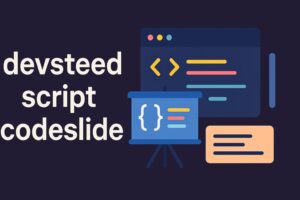Understanding 185.63.253.2001: IP Use, Errors, and Network Implications
The IP address 185.63.253.2001 has been a topic of curiosity and concern for many users who have encountered it while browsing, setting up networks, or analyzing server logs. However, this string often causes confusion because, at first glance, it appears to be a typical IPv4 address. On deeper inspection, it violates standard IPv4 formatting rules, suggesting it may be either a typographical error or a misconfigured entry. This article will clarify everything you need to know about 185.63.253.2001, including its correct form, possible issues, network implications, and how users should handle similar IP address anomalies in cybersecurity and configuration contexts.
What is 185.63.253.2001?
At its core, 185.63.253.2001 appears to be an invalid IP address based on current networking standards. Each of the four octets that make up an IPv4 address, which range from 0 to 255, is separated by periods. In this case, “2001” exceeds the valid limit, thereby disqualifying it from being a valid IPv4 address.
Many users report seeing this type of format when configuring servers, accessing websites, or logging suspicious traffic. It is commonly mistaken for a genuine address, leading to DNS errors, access issues, or potential security flags. Understanding why this address is invalid is essential for ensuring network integrity and avoiding misconfiguration.
Why 185.63.253.2001 is Not a Valid IP Address
1. IPv4 Structure Violation
An IPv4 address must contain four segments (octets), each separated by a dot (e.g., 192.168.1.1). Each segment must be a number between 0 and 255. The “2001” in 185.63.253.2001 breaks this rule.
2. Confusion with IPv6
Sometimes, strings like 185.63.253.2001 are confused with IPv6 segments. However, IPv6 addresses use colons as separators and hexadecimal values. Therefore, this string also doesn’t qualify as a valid IPv6 format.
3. Possible Typos or Misconfigurations
It’s highly probable that 185.63.253.2001 originated from a typo where the final octet was mistakenly typed as 2001 instead of a valid number such as 201. It could also be the result of a malformed URL or server-side configuration error.
The Risks of Malformed IP Addresses Like 185.63.253.2001

1. Access Errors
Attempting to access a server or website using an invalid IP like 185.63.253.2001 will result in connection errors or DNS lookup failures. Browsers and networking tools will fail to resolve the address.
2. Security Concerns
Incorrect IP addresses can sometimes indicate spoofing attempts or anomalies in logs that may hint at a botnet or malware activity. System administrators are advised to monitor such irregular entries for signs of intrusion.
3. Malicious Redirects
Sometimes, malformed IP strings are used in phishing schemes or malware delivery where they appear harmless but redirect users to compromised servers. Always double-check and verify any unknown or malformed IPs in logs or access records.
Possible Correct Form of 185.63.253.2001
To troubleshoot or correct the error, one might assume that the final segment “2001” is a mistake. Possible corrections could be:
- 185.63.253.201
- 185.63.253.200
Both are valid IPv4 addresses and commonly belong to hosting servers or cloud-based infrastructure IP blocks in Europe. Still, any use of such IPs should be verified through WHOIS tools or internal network documentation before attempting to connect.
How to Handle 185.63.253.2001 in Networks
1. Log Analysis
Network and cybersecurity teams should regularly analyze access logs for irregular entries such as 185.63.253.2001. These could be indicators of:
- Typographical errors in configuration files
- Malformed data from bots or crawlers
- Exploitation attempts via fake headers
2. DNS & Firewall Filters
Implement strict input validation on systems that accept IP addresses to ensure malformed inputs like 185.63.253.2001 are flagged and not stored or used.
In firewalls or DNS services, such entries should be blacklisted or logged as anomalies to protect your infrastructure.
3. Educate Teams
If your organization manages multiple servers or devices, provide technical staff with guidance on correct IP formats and the risks associated with malformed IPs. Addressing such knowledge gaps early can prevent significant configuration or security issues later.
Common Scenarios Involving 185.63.253.2001
- Web Admins: During configuration of web servers, a miswritten IP such as 185.63.253.2001 may be entered in access control lists (ACLs), causing downtime or access blocks.
- Security Analysts: May encounter this string in intrusion detection logs and need to identify whether it’s a spoof or a mistyped legitimate attempt.
- Developers: If a back-end script generates a faulty IP range that includes this address, APIs and network services may crash or return errors.
Preventing Future Issues with Malformed IPs
1. Use Automated Validators
Automated input validation scripts or third-party libraries can catch malformed IP addresses before they’re saved or utilized in configuration files.
2. Regular Audits
Conduct regular network audits to identify and remove invalid entries like 185.63.253.2001 from all config files, ACLs, DNS records, and security filters.
3. Log Monitoring Systems
Use intelligent monitoring systems that can tag malformed entries and group them under suspicious or error-level alerts.
Frequently Asked Questions (FAQs)
Q1: Is 185.63.253.2001 a real IP address?
No, it’s not a valid IP address in the IPv4 standard due to the segment “2001” exceeding the limit of 255.
Q2: Why do I see 185.63.253.2001 in my logs?
It could be a result of a typo, a misconfiguration, or even a malformed data packet from bots or external crawlers.
Q3: Can 185.63.253.2001 be a valid IPv6 address?
No, IPv6 uses a completely different format with hexadecimal numbers and colons, not decimal numbers and periods.
Q4: What should I do if I’ve entered 185.63.253.2001 in a configuration file?
Immediately replace it with the correct IP or consult your IT department. Keeping it can lead to access errors or vulnerabilities.
Conclusion
While 185.63.253.2001 may appear to be an IP address, it does not conform to accepted IPv4 or IPv6 standards, making it invalid and potentially problematic in network configurations. Whether it’s found in logs, firewall settings, or system errors, recognizing and correcting such entries is crucial for maintaining secure and functional infrastructure.
Also Read : Explore Numberlina.com: Your Go-To Hub for Data, Trends, and Insights








1 comment